Description
Genus: Boletus
- Genus 2: Pulchroboletus (an eventual move is widely expected).
Species: miniato-olivaceus
Common Name: Red & Olive Velvet Cap
Tells: Rosy pink-red cap tans w/age, usually w/olive patches. Yellow pores stain blue-that-browns, add red w/age & end dingy olive. Yellow mycelium. Pinched base.
Other Information: White to pale yellow cap flesh has a thin red layer under the cap skin, & often stains blue, though sometimes faintly or slowly. Sometimes tastes a little bitter. Stem has pale yellowish ground color, often with pink or rosy longitudinal streaks, the reddish areas occasionally breaking apart into tiny platelike patches. Stem usually pinches at the bottom, but not always. Seems to require hemlock, but some older sources say beech and it’s most common in woods where hemlock and beech occur together. Chemical tests help the ID. The flesh turns orange when cooked.
Edibility: Iffy. People have reportedly gotten ill, but many others have eaten and enjoyed it. Plus the genus tends to be good.
CHEMICAL TESTS:
- NH4OH (Ammonia): Cap surface turns orange/yellow to amber/brown, often with a bluish ring. Cap flesh has no reaction.
- KOH: Cap surface flashes olive-yellow, then rapidly turns olive-green or olive-bronze. Cap flesh turns pale orange.
- FeSO4 (Iron Salts): Cap surface turns grayish olive. Cap flesh turns pale yellowish.
Links:
 |
0 |  |
0 |  |
129 |  |
117 |

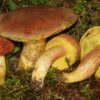
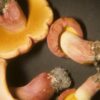
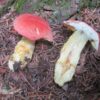
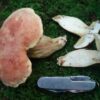
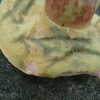
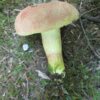
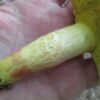
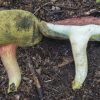
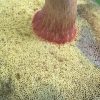
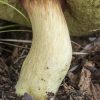
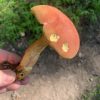
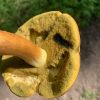
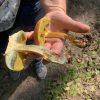
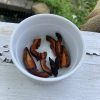
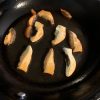
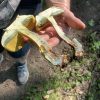
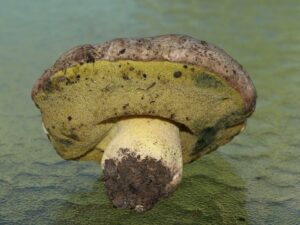
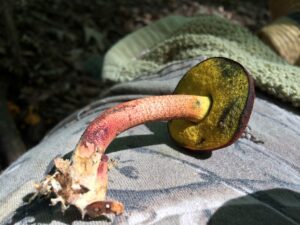
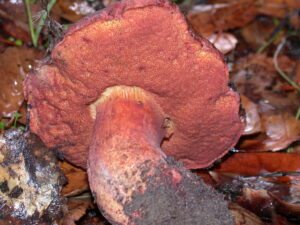
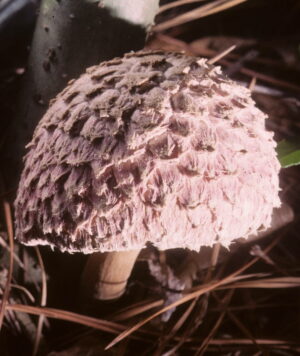
Got something to discuss?
I think i found this in Orange county California
Sorry to take so long getting back to you. Have you got a photo, or an authoritative ID? Mini-O is notoriously hard to get right even in the regions where we know that it grows. What trees did you find it under, and what makes you think it was this particular mushroom instead of a lookalike?
I found this species in Naples, Florida while readying another patch of land for an outdoor mycelium patch. It wasnt near any plants, it was at the foot of a hill behind my pool. There has been a lot of rain lately especially early in the day the past few weeks.
Nice. Is there something you want me to share about it that would help other people with their ID’s?